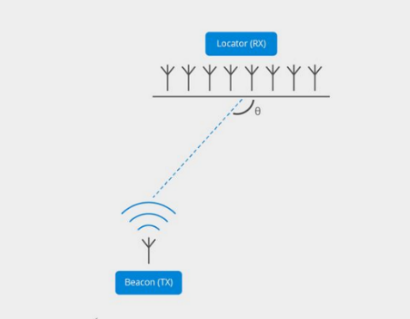Limitations of WiFi-based RTLS
Many years ago, a sales rep brought a customer opportunity to me. This customer wanted to track the bolts in a bin. I explained how WiFi-based RTLS worked and asked the 3 fundamental qualifying questions:
- Is 5-7m accuracy sufficient?
- Is the asset valuable enough to justify an $80 tag?
- Will a rotation program be needed to swap batteries every year?
With a fresh understanding of the limits of WiFi-based RTLS, the sales rep left to hunt more appropriate opportunities.
These limitations have bothered me. RTLS deployments have been relegated to single use cases in specific departments, never quite able to become a truly enterprise solution. And yet, if location and condition insights were available at the enterprise level, the value delivered by RTLS solutions would increase exponentially.
The Grandeur of Bluetooth 5.1
BLE 5.1 (Bluetooth 5.1) has a chance to shatter these barriers with:
- The promise of submeter accuracy
- Low price points thanks to the consumerization of BLE silicon
- Long battery life thanks to the power starving nature that makes it “low energy”
In addition, BLE 5.1 offers other compelling characteristics that should help to open new use cases. It has the ability to read tags from 300 and even 700m (depending on tag output power) and it can track in the vertical dimension providing x, y as well z coordinates.
How BLE 5.1 Works
BLE 5.1 uses a technique called “angle of arrival” to achieve these new levels of accuracy. Each BLE reader (the equivalent of an access point) uses a series of micro antennas at very exact spacing which distinguish minute differences in the angle of the arriving signal from a tag. More precisely, it’s the differences in the phase of the sign wave received by each antenna, but for practical purposes its easier think of this as the angle of the arriving signal. These principles were originally used in land-based radar arrays in the early 1900s to locate aircraft as part of a defense system. More recently, WiFi-based solutions used angle of arrival with some commercial success.

The Potential of BLE 5.1 Pervasiveness
Silicon vendors are offering design kits and solution providers are in early phases of introduction. However, if the technology delivers on its promises, we should be able to track items in near real time, over greater distances using significantly less infrastructure. Consider the new use cases not possible with WiFi-based RTLS systems:
- Beyond bed-level accuracy in healthcare settings, location determination relative to the patient’s body
- Outdoor tracking across acres of area without an overlay grid network of receivers
- Inventory picking applications from bins in a 3-D geometry
- Geofence zones accurate to the area of a production work cell
The arrival of BLE 5.1 has come at an opportune time. As millions of devices get lit-up as part of the IoT wave and have been since Bluetooth 5.1, location awareness will play an important part. With new price points and new use cases, RTLS has an opportunity to break out of the departmental islands and become a “service bus” to all parts of the enterprise and applications, bringing new insights to processes and reporting that extend well beyond individual departments.
To see how AiRISTA utilizes WiFi-based RTLS and BLE 5.1, check out how we’ve benefited multiple industries across multiple solutions.





